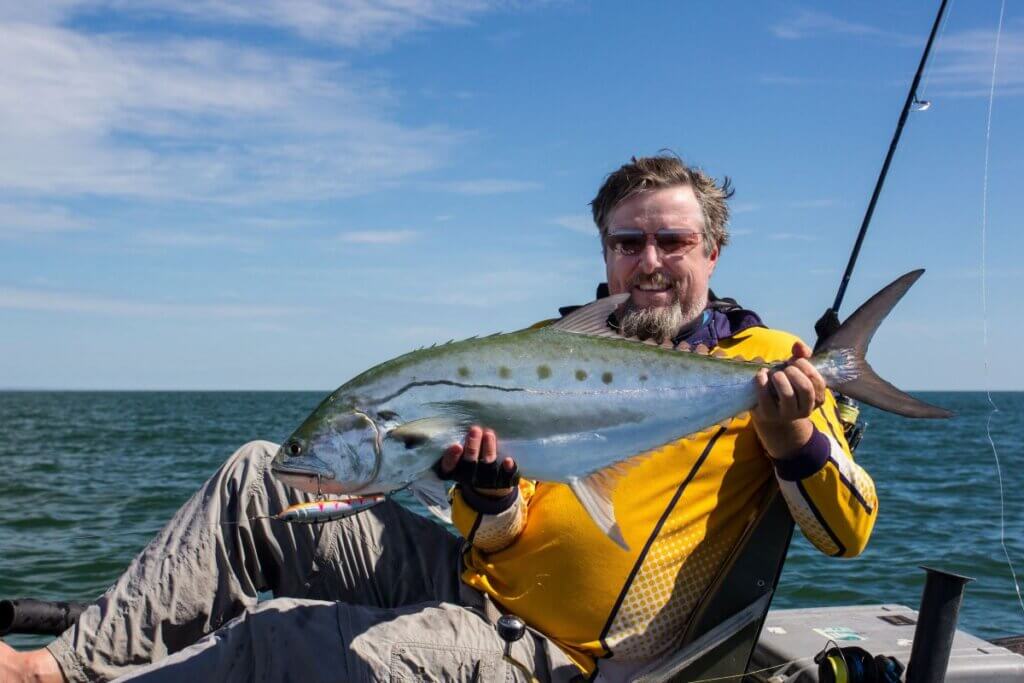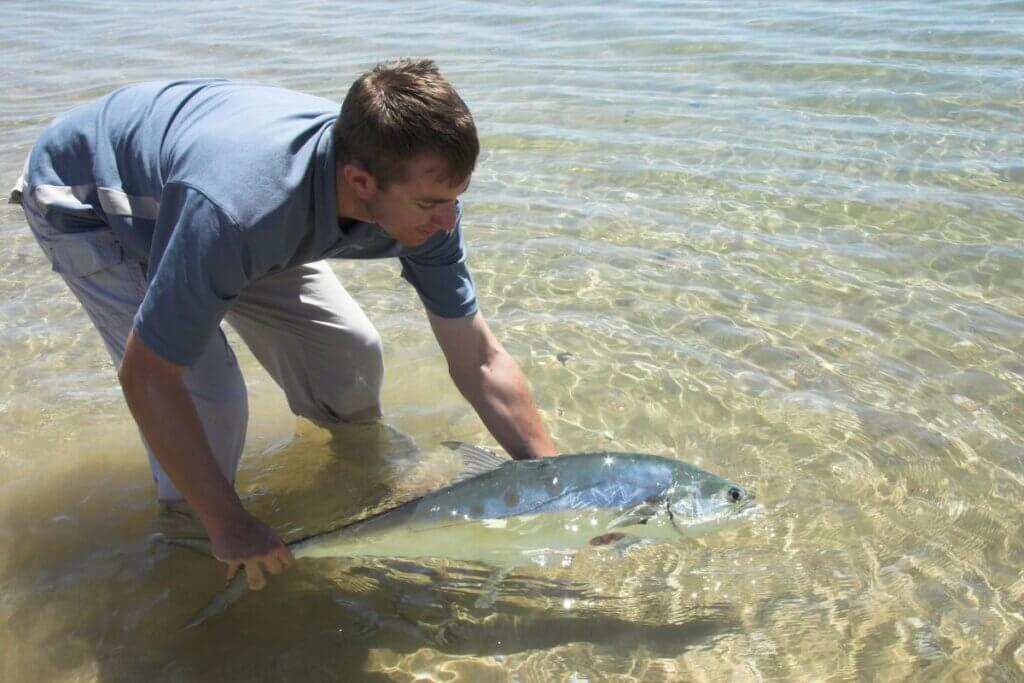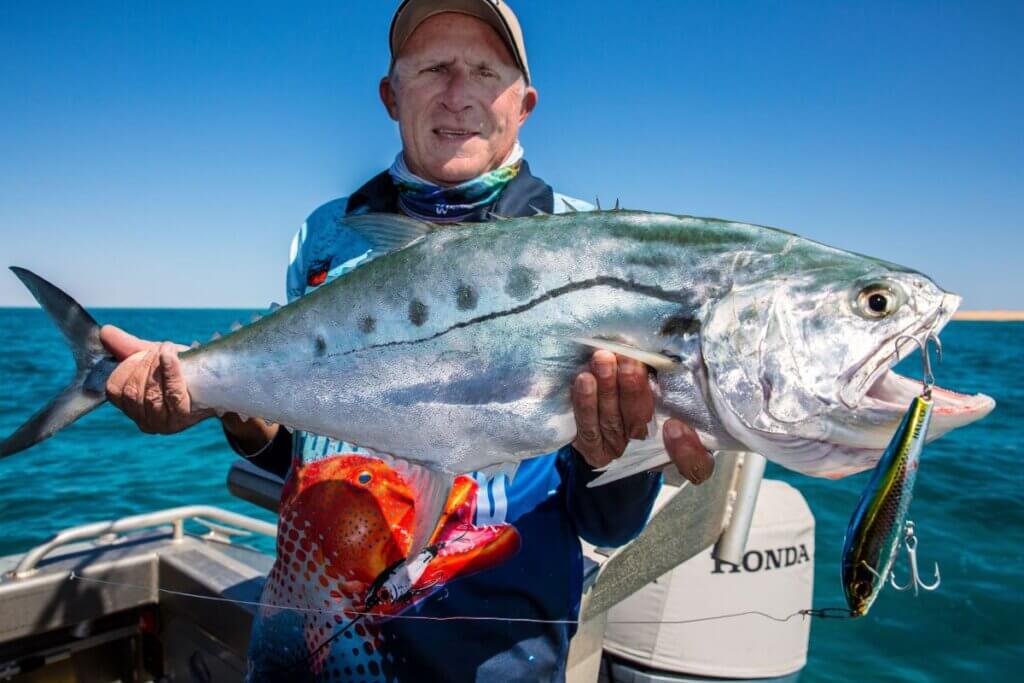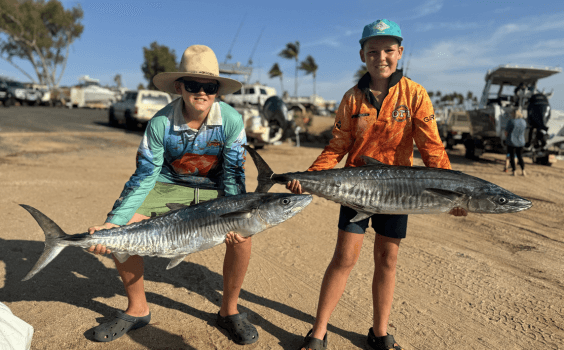Aggressive and fast — queenfish are a classic northern sportfish, writes Western Angler editor Scott Coghlan in this week’s edition of Scott’s Species.
Species: Queenfish, Scomberoides commersonnianus
Eating: 3 stars
ID: Long, skinny fish, with several spots along its silvery flanks.
A classical northern sportfish, queenfish are found from Shark Bay north and are a staple of fishing in the Pilbara and Kimberley.

Queenfish grow to about 15kg, but are most commonly encountered around half that size. Any fish over 1m is considered a trophy capture.
They are mainly an offshore species found in shallow water around reefy areas, but will often turn up in estuaries and creeks.
They are often found cruising shallow sand flats looking for baitfish and this is a favoured area for sportfishers to target them, as they make a great sight fishing target in skinny water.
Exmouth Gulf is renowned for producing superb flats fishing for big queenies, both for shore and boat anglers.
We have also done very well on them in the shallows at the Mackerel Islands. Queenfish are not dirty fighters, often spending a lot of time in the air once hooked.
In fact, they are a fine sportfish, combining acrobatics with dogged determination.
Braided or mono line around 6kg to 8kg is ample for even the biggest queenfish. A light spin rod capable of casting small lures is perfect for the job.
Although they are often caught in big sizes and sometimes attack lures with suicidal abandon, there are times when queenfish will be quite choosy and prefer smaller lures.
While they will take fish baits, for most anglers the best way to target queenfish is with lures, and in particular poppers and stickbaits.
Watching queenfish crash surface lures is enthralling. Sometimes they will dart all around lures without striking, which means it is time for a change.

If using a surface lure, this may mean a sub-surface offering, and they will take minnow lures. Varying the retrieve is another good option. Small metals and lead-head jigs are also superbly effective options.
Fly fishing is popular for queenfish, and soft plastics also work. Crushing the barbs is advised if the fish are to be released, as is switching to single hooks on lures if targeting queenies.
Their gillrakers run almost to their mouth, so hooking them with trebles can do considerable damage.
Also, take care handling them as they have some nasty spikes. Queenfish can be quite flighty and move around a lot.
One moment they will be everywhere and the next they will have seemingly disappeared.
A good time to target them is around the start of tidal movement and as they like movement in the water.
They often patrol areas where there are strong currents, causing eddies and rips.
In shallow flats areas, they will move up into surprisingly shallow water as the tide rises and seeing them cruising the skinny water is an exciting sight for any angler.
Queenfish are definitely one of my favourite species to catch! I best get up north again soon!






